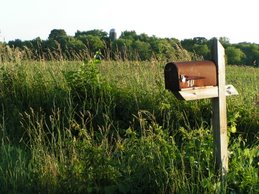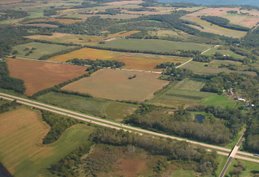By Bill Livick
Oregon Observer editor
This article appeared in the August 2, 2007 edition of the Oregon Observer.
When Oregon’s Village Board unanimously passed a one-year moratorium on residential annexations in May, trustees sent a clear message that they wanted to put the brakes on outward expansion. Under the leadership of then newly elected Village President Steve Staton, the board did an about face from the preceding six years, when boards led by Jerry Luebke gave a green light to virtually any and all development proposals.
Today’s Village Board has indicated its preference for what’s known as infill development, filling unused space within present boundaries and building up, rather than out. In passing the moratorium, the board noted the downturn in the housing market and the decrease in the number of 2007 building permits in the village, as well as the high number of vacant lots in the Bergamont development.
Members of the Village Board have suggested that the annexation moratorium could be extended another year or two if things don’t turn around, and thus far there’s no indication that the housing market will.
Unlike the village’s new go-slow approach to residential development, the city of Fitchburg appears to be moving forward with plans to develop an 868-acre tract between County Hwy. MM and Larsen Road known as the Northeast Neighborhood. Planners estimate the project would add 1,432 new residences and 103 acres of commercial development in an area that is presently agricultural property and woodland. Such urban sprawl in that area, which is very near the Nine Springs E-Way corridor, is unwise.
A group of citizens from Fitchburg and the town of Dunn are opposed to the idea for several reasons. Their No. 1 concern is the threat it would pose to Lake Waubesa and two watersheds – the Nine Springs Creek watershed and the Swan Creek watershed. The streams feed the lake and serve to “flush” its southern basin by moving water northeast and into the Yahara River at McFarland.
An article published in The Fitchburg Star in November says the Northeast Neighborhood development would cause “irreversible degradation” to streams and springs in a state natural area described as one of the highest quality and most diverse wetlands remaining in southern Wisconsin.
The same article cites UW-Madison researcher David Zaber, an expert in freshwater environments, who says the sprawling development would add pavement, homes, storm water runoff and thousands of more automobiles and people to the area. A better use of the land, he suggests, would be to create a conservation corridor from the E-way to Oregon using easements and funds for land acquisition.
Phyllis Hasbrouck, a founding member of the West Waubesa Preservation Coalition, likes Zaber’s idea. And she proposes other uses for the area, such as community gardens, a school of organic agriculture, a farmer’s market within biking distance and “a healthy lake full of healthy fish.”
“We’ve proposed that the Northeast Neighborhood of Fitchburg become a center for sustainable agriculture, instead of one more car-centered development that would incidentally ruin the wetland that keeps Lake Waubesa healthy,” Hasbrouck says. “Maybe you think this is a far-out idea that could never work. But we think that repeating a model whose time is passing is a really kooky idea.”
She goes on to say that if Fitchburg’s alders and mayor were to vote against including the 868 acres in the urban services area, the proposed development would not happen.
“Then all we need to do is raise some millions of dollars to buy the land back from the developer,” Hasbrouck says, adding that it’s not impossible. “People do it every day. More and more donors, foundations and companies are seeing the writing on the wall and want to put their money towards a sustainable future.”
• • •
Why should folks in communities south of Fitchburg care about what happens there? There are many reasons. Most of us value the quality of Lake Waubesa and the Nine Springs E-way, which is part of the Capital Springs State Park and Recreation Area. The area has 3,700 feet of undeveloped shoreline on Lake Waubesa.
Additionally, most people in Oregon, Brooklyn and the surrounding townships commute to Madison to work. Does the idea of hundreds, if not thousands, of more automobiles on Hwy. 14 and Hwy. MM appeal to you? Do you care about air quality?
And what about Oregon’s housing glut? Last week Observer reporter Seth Jovaag detailed the number of condominiums in the village that are sitting vacant – more than double the number per capita in Verona and Stoughton. (And also a far greater percentage than Fitchburg, which has no shortage of available housing.)
Finally, there’s the question of psychological well being. Of course this is difficult to gauge, but right now commuters to Madison pass through an agricultural and environmental corridor that is a welcome relief from the congestion of the city. Most people who live in outlying communities do so for a reason. If Fitchburg’s growth continues unabated, it won’t be too long before southern Dane County begins to look like the sprawling suburbs of Milwaukee.
What can we do about Fitchburg’s proposed Northeast Neighborhood? One option is to get involved in the West Waubesa Preservation Coalition. (Go to westwaubesa.org) If you’re not the activist type, how about writing a letter to Fitchburg’s alders or mayor. Tell them to take a look at what the Oregon Village Board is doing regarding residential development, and suggest they do the same.
In the meantime, just imagine what that nearly 900-acre tract could be other than another sprawling development.



No comments:
Post a Comment